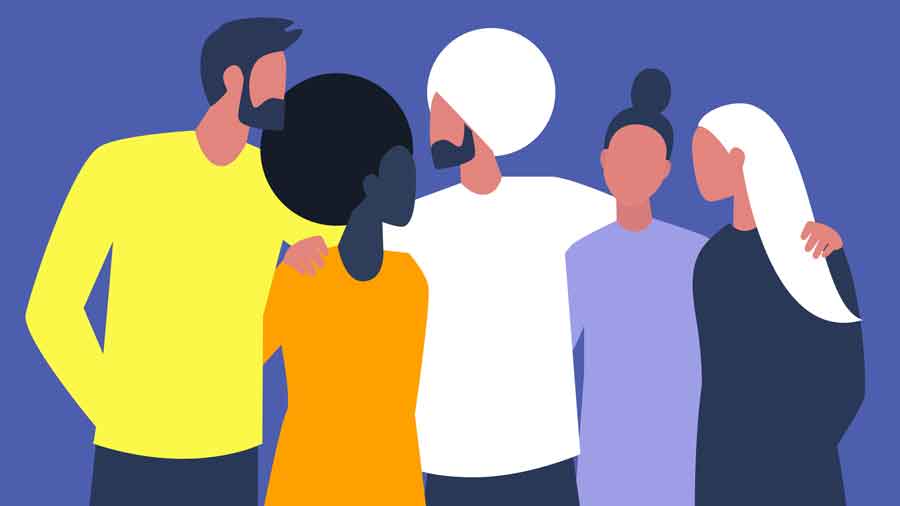The future of people services
What the post-COVID-19 working landscape means for organisations and the people who manage them

INNOVATION & IMPROVEMENT
Image: Istock
Gera Patel
Partner, Campbell Tickell


Ian Wright
Chief Executive Officer, Disruptive Innovators Network
Never before has the world of work changed as much or as quickly as it has in the past 12 months. For some businesses, the COVID-19 pandemic and ensuing lockdown has almost entirely transformed the way they operate. Within that transformation, the ‘people’, organisational development and HR functions of organisations have become critically important in a way that they perhaps have never been before. The move to working remotely is forcing us to reimagine everything from workplace culture to pay and reward structures, from wellbeing and mental health to the employee value proposition and productivity.
In the new Future of People Services report by Campbell Tickell and Disruptive Innovators Network, thought leaders and experts in the HR and people sector offer their insights into what this new landscape means for organisations and the people who manage them.
The key questions
Some of the key questions addressed include: how can organisations better manage employee wellbeing? How can we devise a fairer, more flexible reward system? Has working from home fundamentally changed the relationship between employer and worker? And what role will data play in the brave new world of 21st-century work?
The report lays out the context and attempts to answer these and other questions.
While the report is presented as a series of chapters, each subject area covered – from leadership to wellbeing, from pay to diversity – has an impact on the others. In other words, when one lever is pulled at an organisational level, it has effects across the business.
That is why we believe it is more important than ever to make sure that an organisation’s people function sits at the top table with its strategic leadership team. Businesses need to ensure that their organisational infrastructure is built around people, rather than have people fit into a pre-existing structure. We think a good question leaders should be asking themselves at the moment is: “How can we ensure HR/People services have a role in setting the organisation’s future strategic direction?”
“We believe it is more important than ever to make sure that an organisation’s people function sits at the top table with its strategic leadership team.”
Necessary change
For some businesses, this will represent a major cultural change. But for any that consider themselves forward looking, it is a necessary one. It is only through this change in emphasis that organisations will start thinking about their people as individuals – and start valuing them as such.
The breaking down of the barriers between home life and work life has demonstrated that this is a necessary revolution, as well as a long overdue one.
Many businesses claim to be focused on their people, but only by putting the part of the business that deals with their staff at the forefront of the decision-making process can they match this rhetoric with action.
Top 10 recommendations for the new world of work
01
HR and people teams need to be brought into organisations’ strategic thinking from the very start. Processes within that function need to be designed from the bottom up, so that they match the ‘real world of work’ in which employees now operate.
02
Organisations should be cautious about making major strategic decisions based purely on the past 12 months and the fallout from the pandemic. Think ahead five years to what the world of work will look like and how you want to position your organisation and the people within it. No, you won’t have all the details but that long-term vision to aim for is very important.
03
The office is not dead but it will change. Use this as an opportunity to imagine new ways to use the same space to enhance employee engagement. Think of the areas where you want people to come together physically to collaborate and design spaces that support this.
04
Meanwhile, avoid creating a two-tier system between those who can and cannot work from home. Design a system of benefits that works for every employee’s situation and does not discriminate, so that those who are unable to work from home are not ‘punished’ by spending more time commuting for example.
05
The concept of surveillance-style management should be phased out and replaced by a system of mutual trust between manager and employee. But be careful to understand what systems and processes you are replacing to understand how the work is now getting done and what the signs are that your team and employee wellbeing is being impacted. If you’re looking to introduce people or workplace analytical tools this should start with a conversation with those likely to be affected so they understand what is being done, why it’s being done and how it will be used to support them do their jobs.
06
Training around how to spot burnout and how to manage wellbeing should become essential for all leaders and everyone within HR/people functions.
07
Employers need to rethink productivity goals to make them reflect a more blended approach to work. This does not mean lowering expectations, but, for example, making sure that targets are more flexible as a worker’s personal circumstances change.
08
Salary will not be the most important thing when it comes to recruitment and retention, so organisations must be imaginative and flexible when designing reward packages to attract talent. Flexibility around where and when to work will become ever more desirable.
09
Diversity and inclusion should be seen as an output rather than an input. Organisations must invest time and resource to understand why they have diversity problems and only then decide how to fix them.
10
Data will become increasingly important to tackle these and many other problems at an organisational level. Data collection must be rigorous and data analysis should be front and centre of strategic planning. Start by collating what existing data your business already holds that can help you understand what is happening in the organisation .


